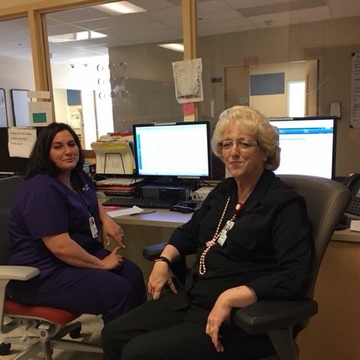
Sandoval County Medical Center Treating a Number of Sleep Disorders
"Sleep should be a time when the body is at rest and healing," says Nancy Polnaszek, director of the Sandoval Regional Medical Center (SRMC) and UNM Hospitals Sleep Disorders Centers.
Unfortunately, for patients suffering from obstructive sleep apnea, the opposite occurs.
Sleep apnea causes the throat to become blocked as the body relaxes during sleep and breathing ceases, sometimes for extended periods of time. That interruption, in turn, causes a "fight or flight" response, with the person regaining consciousness just long enough to take a breath. The brain returns to sleep and the process begins again - sometimes repeating the cycle several hundred times in a night.
The results is that instead of awakening refreshed, one starts the day feeling as fatigued as when he or she climbed into bed the night before.
That fatigue that can lead to mood swings, depression and poor motor skills during the day, including long-term effects that are more destructive. A person, for example, may develop high blood pressure caused by years of undiagnosed sleep apnea. Sleep apnea also places a person more at risk for developing chronic diseases such as diabetes, kidney failure, stroke, heart attacks and others, Polnaszek says.
Three sleep-trained clinicians - Lisa Cutchen, MD, Shanna V Diaz, DO, and Stephen Buscemi, CNP - currently see patients 12 years and up at SRMC for sleep related disorders.
A sleep evaluation and, if needed, a sleep study at the SRMC Sleep Disorders Center can break that cycle and turn a life around, according to Karen Castanuela, the center's supervisor and a registered sleep tech.
"Many people are resistant to the idea of being evaluated or, if their diagnosis requires, to begin using a Positive Airway Pressure (PAP) machine - until they try it and discover the benefits of how much better they feel and function during the day," she says.
Modern PAP machines provide a positive airflow that keeps a patient's throat from closing due to obstructive sleep apnea. The machines are quieter and far less bulky than they used to be. A wide number of mask types also help provide a customized fit and more comfort, she says.
With the airway once again open, the body can slip into the restorative stages of sleep that allow for the body's organs to rest and recover.
"When people feel the benefits and increased energy," Polnaszek says. "they typically become converts."
For more information on SRMCs or UNMH's Sleep Disorders Centers, including tests and information for evaluating sleep disorders, go to https://hsc.unm.edu/health/patient-care/sleep-medicine